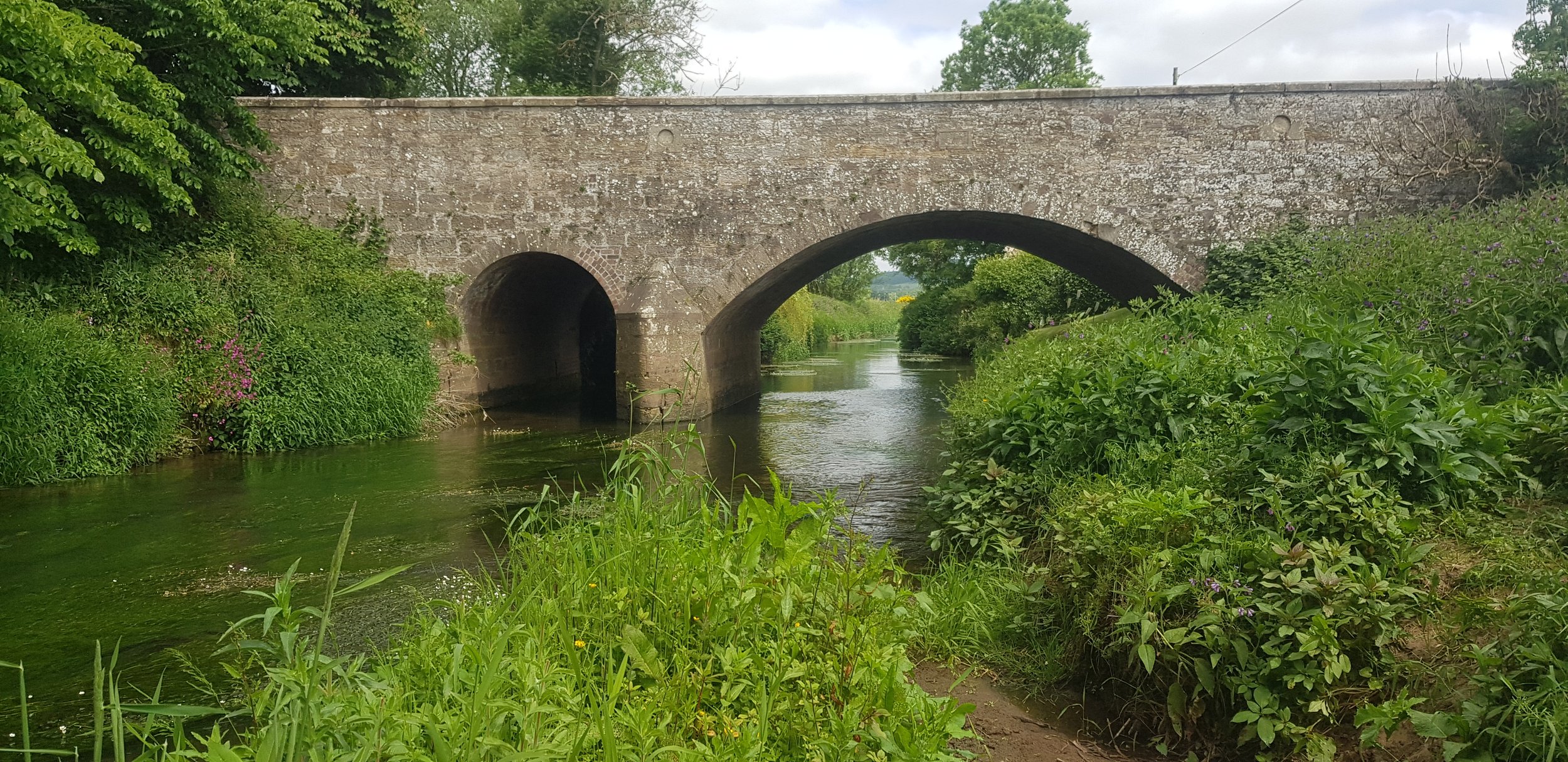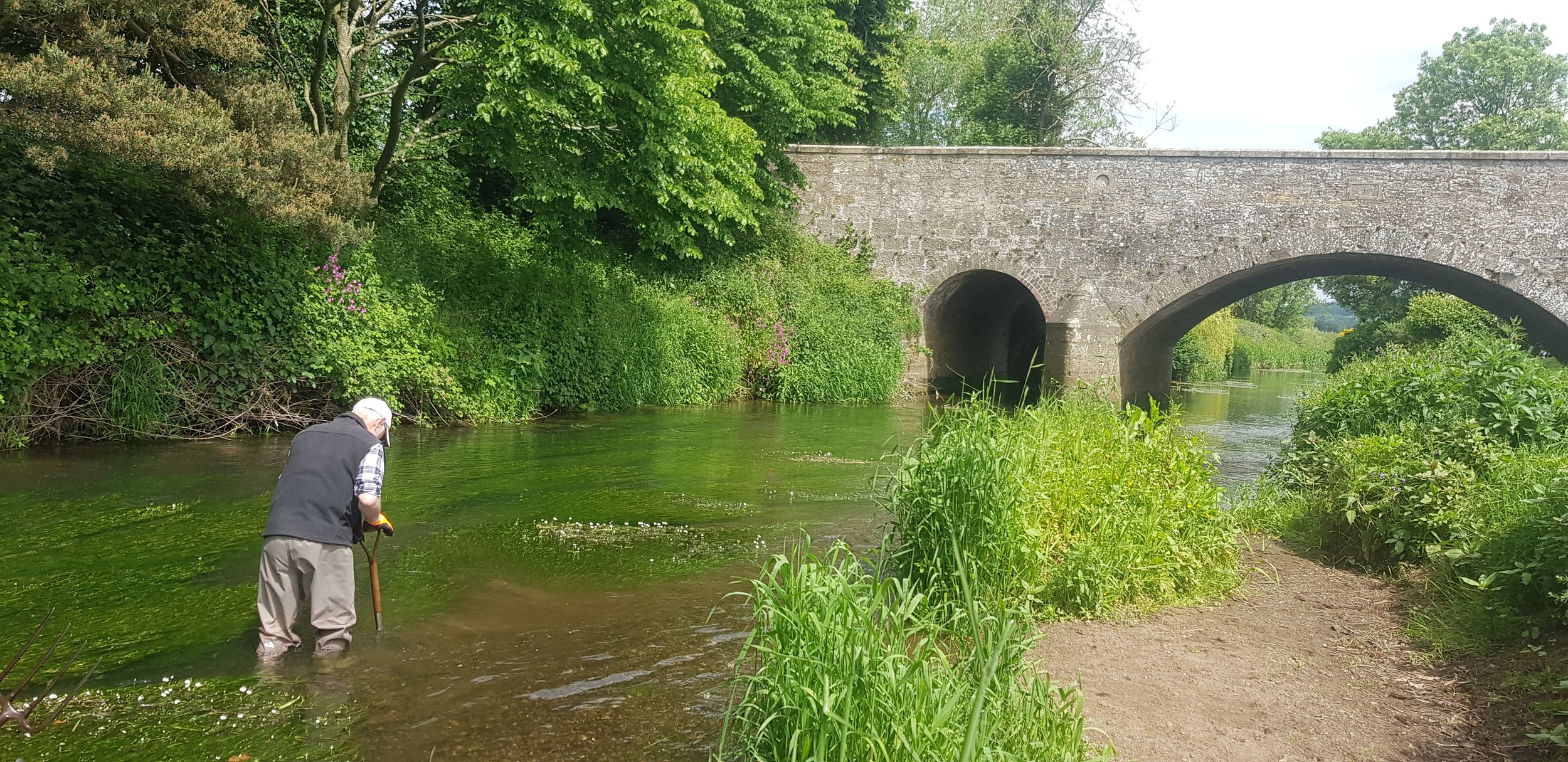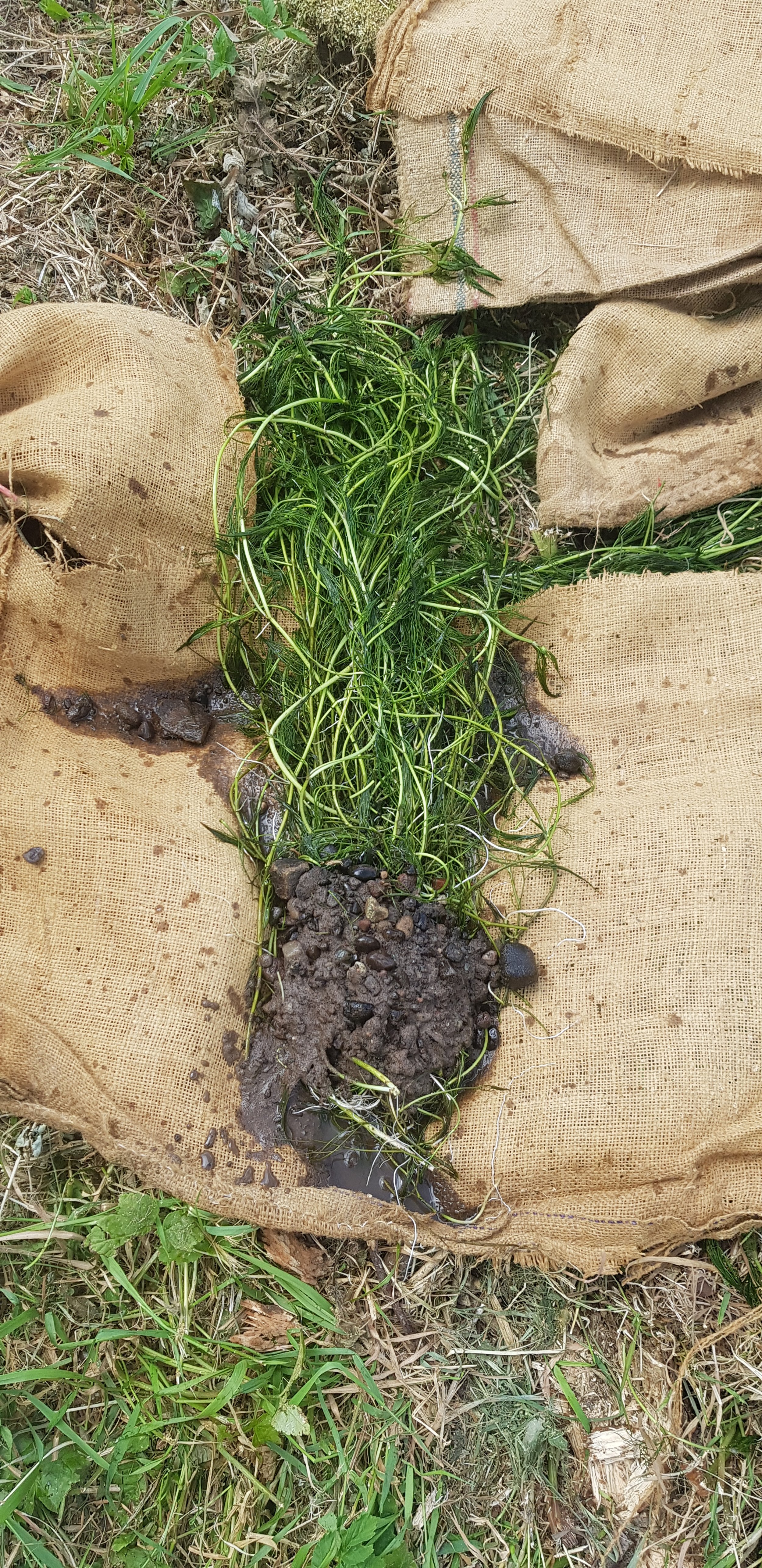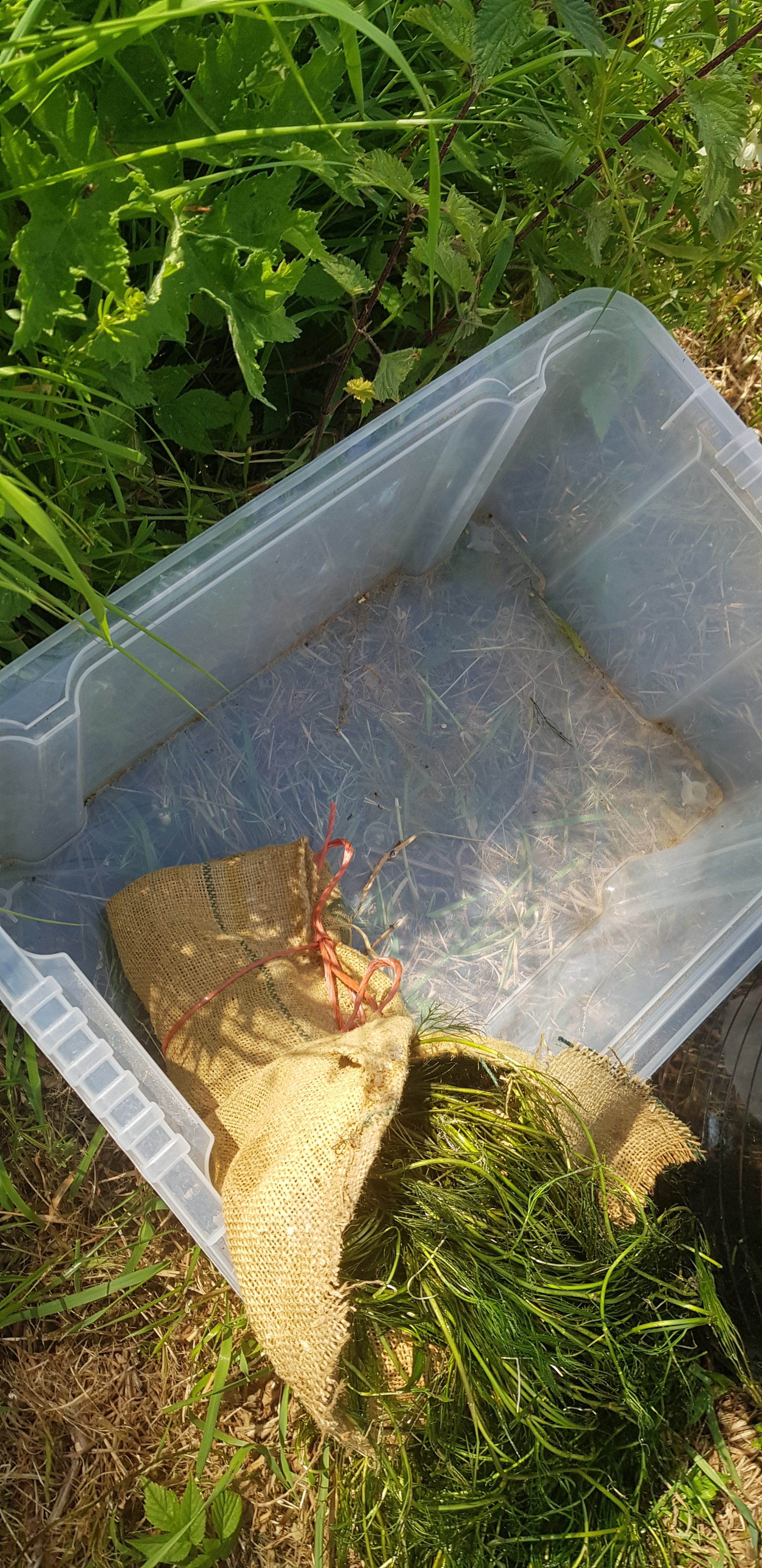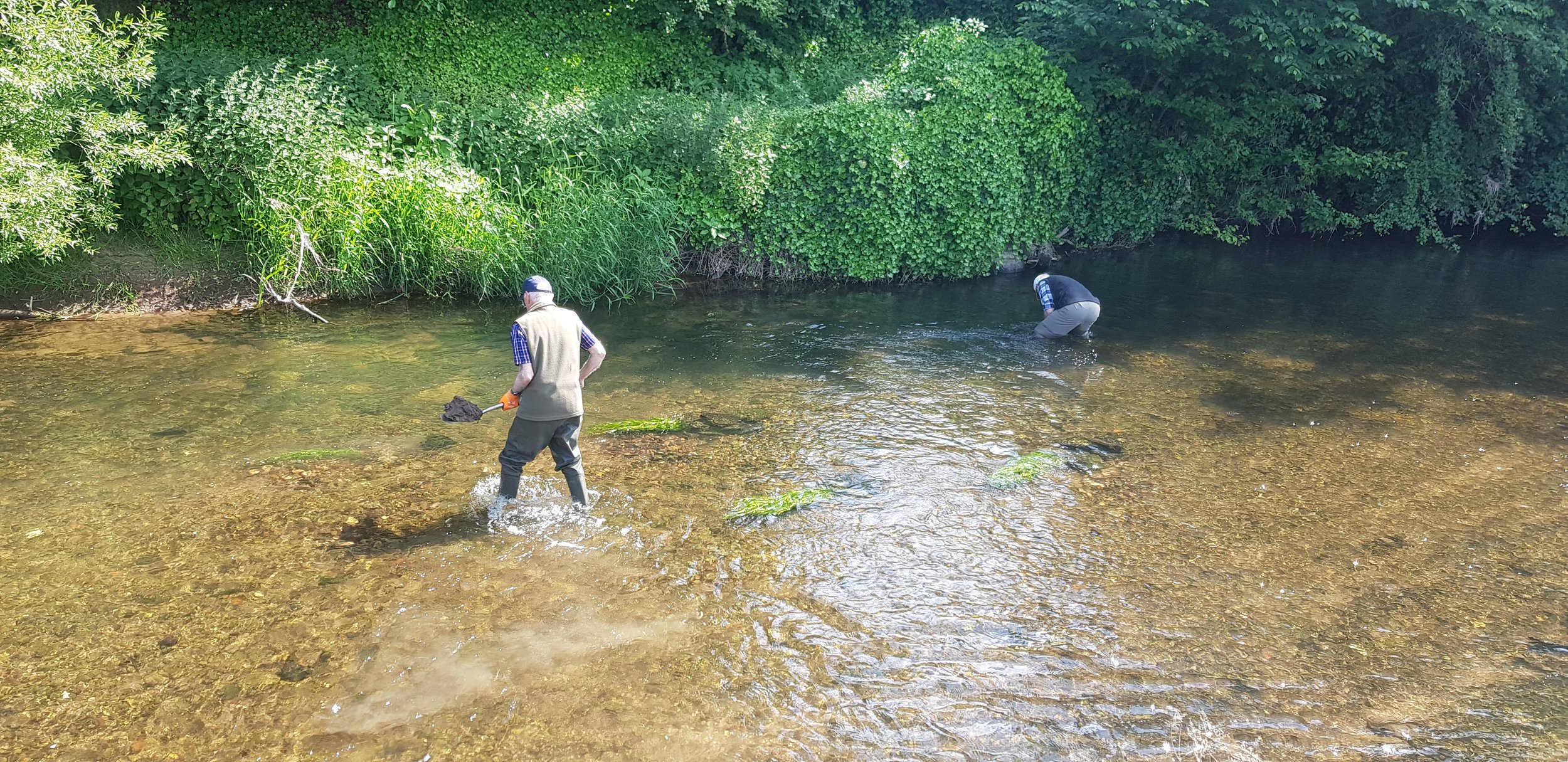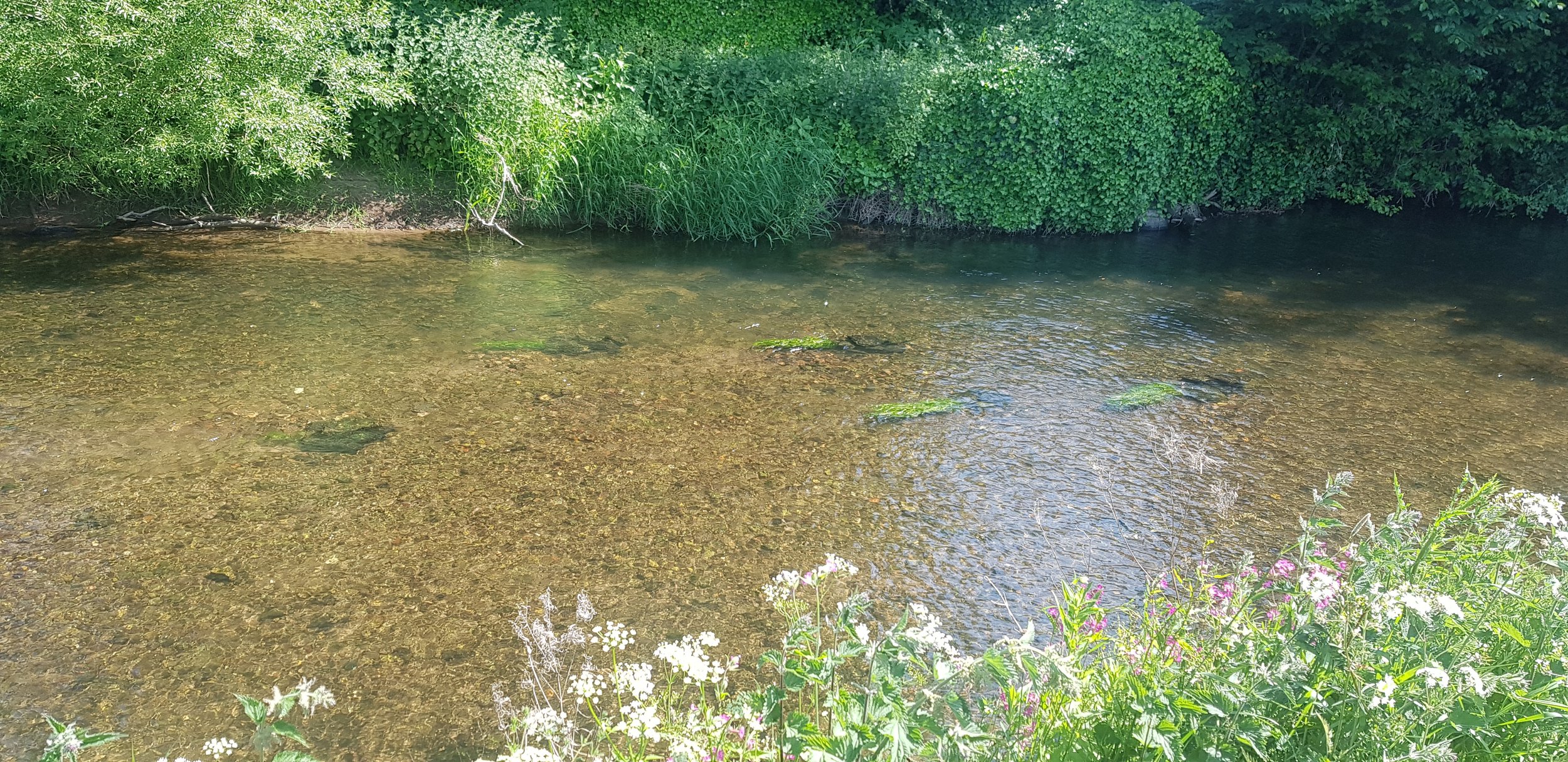There is a lot to report since the last newsletter in March.
In this newsletter:
Let’s get to the basics first..!
How's the fishing?
How’s the fishing?
There are some nice reports on the Facebook page of decent brown trout being caught both on small Mepps and on the fly and some sea trout showing lower down the river. And if you are in the right place at the right time, you’ll see some steady rising fish. However, the low water and warm conditions are already having an impact even this early in the season. We could do with some rain but at the time of writing it looks like it’s going to be mainly dry and warm for the next week or more - apart from the odd shower.
Beautiful brownie!
Committee member Cammy Spears had a good morning this week but gave up early as it was too hot. Still, he managed 8 brownies all in mint condition, all returned.
Please keep putting your reports on the Association Facebook Page to share with the members.
If you still don’t have your permit, remember they are available from outlets across Fife and also from the Secretary if you email your details and transfer funds to the Association account.
More details here >>
How's the river
How’s the river?
It is always a pleasure to be on the river even when you’re not catching. You can still enjoy the wildlife, see the flash of a kingfisher or a dipper and hope that the next time you cast alongside some trailing cover, a monster take will straighten your line…
But as already said, water is low and we continue to have concerns about the pressure on the river from a number of sources: diffuse pollution from agriculture, raw sewage, too much silt, lack of river weed (ranunculus) especially in the lower stretches, water abstraction for irrigation of crops, invasive species like Giant Hogweed, Himalayan Balsam and American Signal Crayfish.
Improvements
What are we doing to improve things?
Crown Estates Environment Fund
In March we found out that our bid for £11.3k funding for river restoration and water quality monitoring was successful. This money is being spent on getting expert advice on how to restore the river and improve the habitat. This includes
modifying small boulder weirs which hold back silt and cause erosion when the river is high.
planting and hinging trees to create shade and cover. This should lower water temperature and where there is wood in the river, create a refuge for fish from predators. It will also stabilise the banks and prevent erosion.
adding woody deflectors in certain stretches to create more diverse flow which will scour out the silt and create better pool and riffle structure.
transplanting some of the vital river weed ranunculus which has disappeared from the river below Cults Mill. More details below.
Carrying out water quality monitoring to gather data on nutrient levels and other pollutants that are affecting the habitat.
We are grateful to the Crown Estates Environment Fund committee for recognising the value of our project.
RESSSP
River Eden Source-To-Sea Sustainability Project (RESSSP)
The Association is also working in a new partnership called RESSSP. Along with several other organisations (Sustainable Cupar, Fife Coast and Countryside Trust, St Andrews University and Fife Councillors) we aim to promote a whole-catchment approach to improving the river. We have applied for funding from the NatureScot Nature Restoration Fund (NRF). If we are successful, we will be able to appoint a project officer who will manage projects on the river recommended by the steering group. This will include developing a long-term strategy for the entire catchment to control Giant Hogweed and other invasive non-native species like Himalayan Balsam and Skunk Cabbage. In the process of writing the application we have been discussing the project with Scottish Water, SEPA and landowners as we need the agreement of all parties to get the work done. This has led to lots of positive conversations where we are trying to find a win-win situation for everyone involved.
We will continue to seek funds to promote a vision for a biodiverse natural river corridor for community benefit – and that includes improving the habitat for fish!! We will find out if we have been successful with the NRF at the beginning of July.
Ranunculus Transplant
Ranunculus Transplant
A few months back the Courier reported the Association plans to transplant the vital river weed ranunculus from above Pitlessie to key locations downstream where it disappeared in around 2016 and never recovered. Ranunculus is amazing stuff. It is full of insects, provides cover for fish from predators like otters and fish-eating birds and it encourages diverse flows in the river, helping to create gravel beds for spawning salmon and sea trout and feeding lanes for rising fish.
Members digging out a clump of ranunculus to plant further downstream
We are still keen to find out why it has not reseeded but a report from SEPA in 2018 was inconclusive and they promised further tests to try to work out why. The SEPA cyber-attack together with Covid put a stop on that but we have recently been in touch again and we will find out soon if more ecology and water testing is to be carried out.
In the meantime, we have been going ahead with a trial of the transplant. This was attempted in 2020 but it was flushed out by floods and didn’t take. This time we are using a technique recommended by the Wild Trout Trust. On Friday 9th June, some members dug out some clumps of the weed still rooted in river sediment and then transported them to the new site. We wrapped the root ball in hessian and buried it more deeply in the riverbed protecting it with rocks. We will be keeping a close eye on it this time to see if it works. We will try again a couple of times this summer and if it takes, we can then be confident in transplanting more.
Riverfly
Riverfly Invertebrate Monitoring
Some EAA members have taken part in Riverfly training – a national scheme to monitor key invertebrates on the river. On Sunday 11th June, a group of volunteers including EAA members, took a kick sample of the bugs in the river and recorded the number of each of 8 key indicator species. We were delighted to pick up a stoneloach in the sample, carefully returned to the river. We are still learning the methodology but once we are in the swing of it and have more volunteers, we hope to monitor several sites to show how healthy each one is. The data gets uploaded to a national database where it can be compared with rivers across the country. We can also use the data to push for further improvements to the river to promote biodiversity. We are delighted that Pitlessie Primary School are going to be involved too.
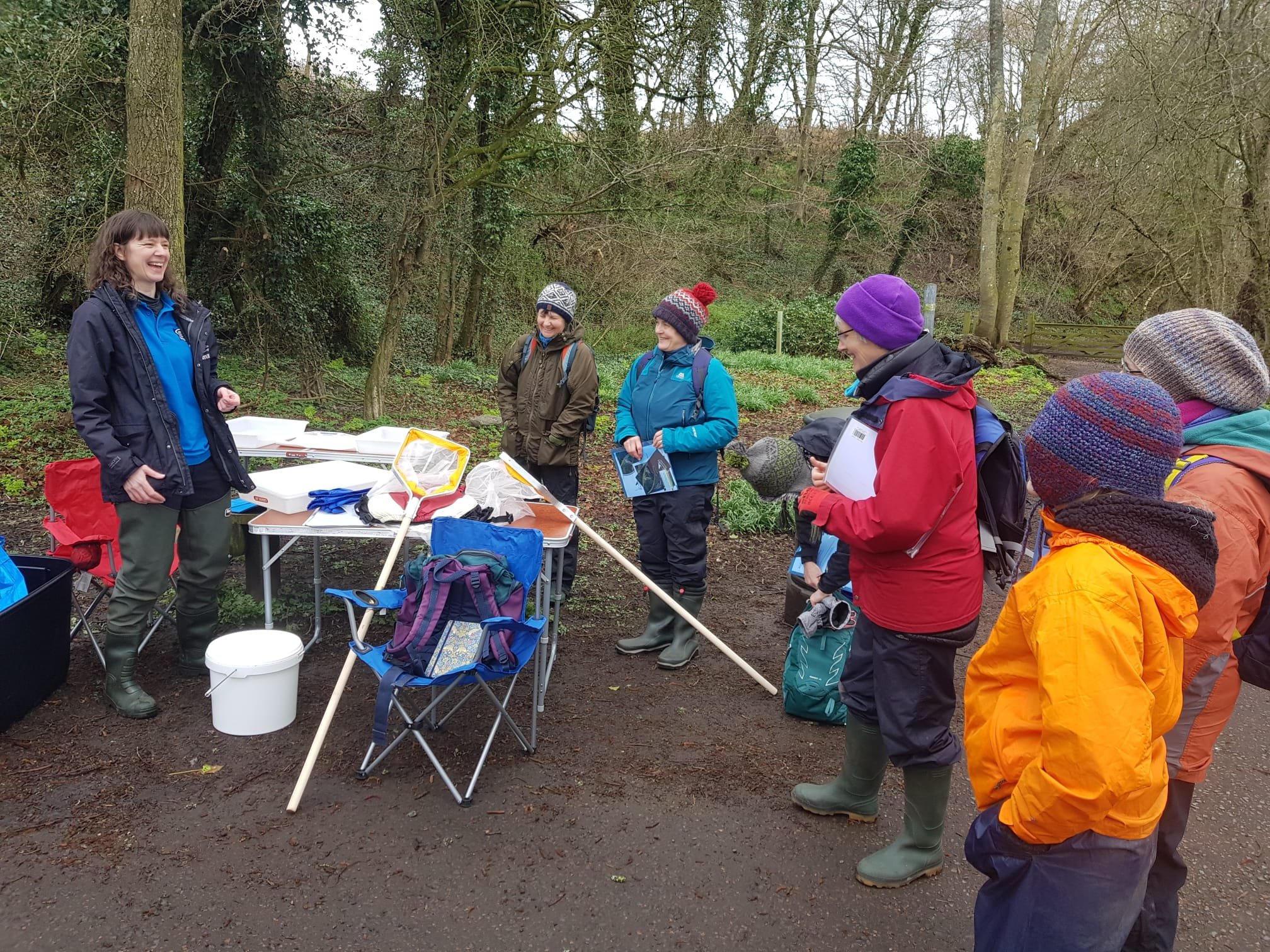
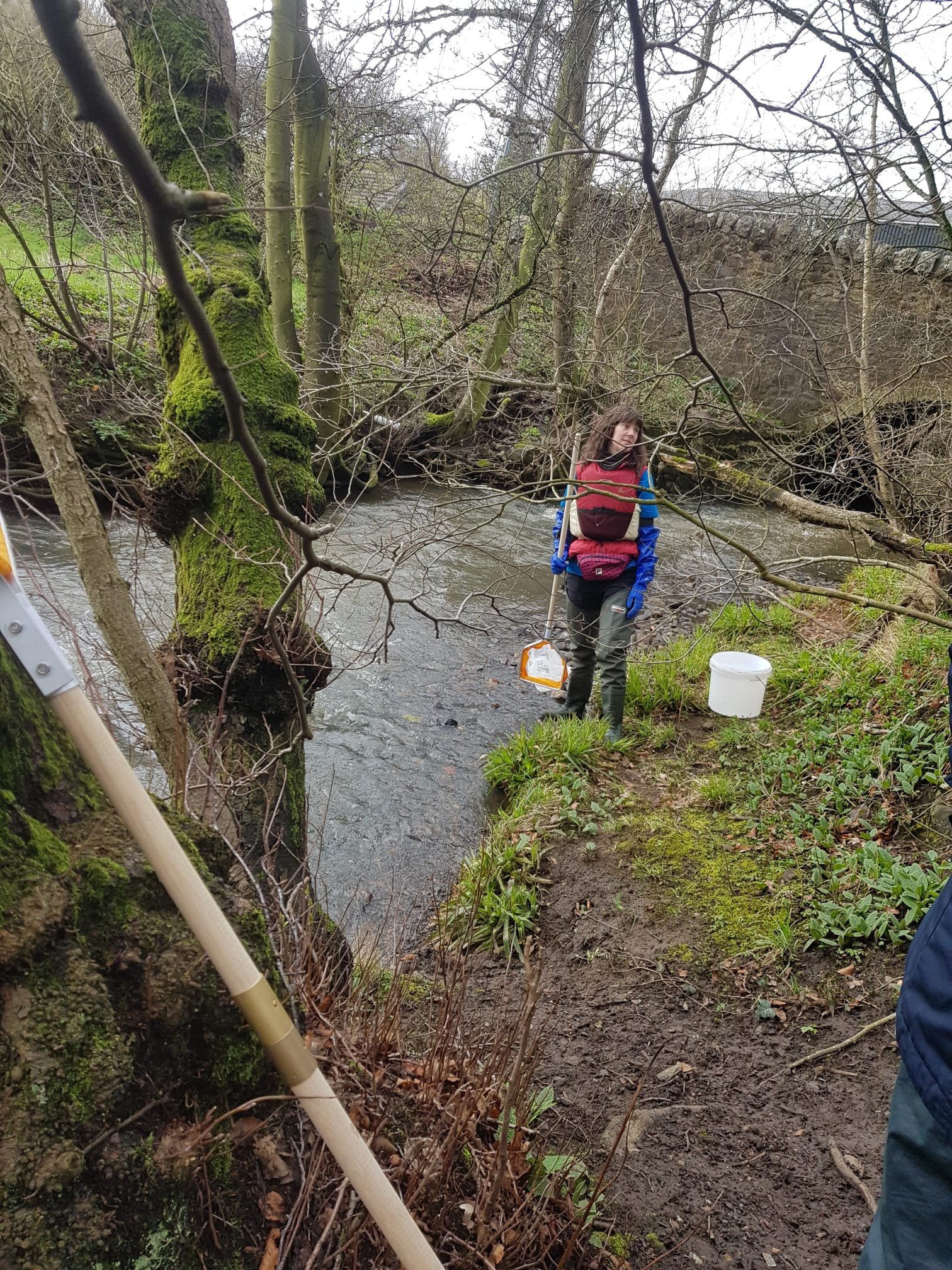
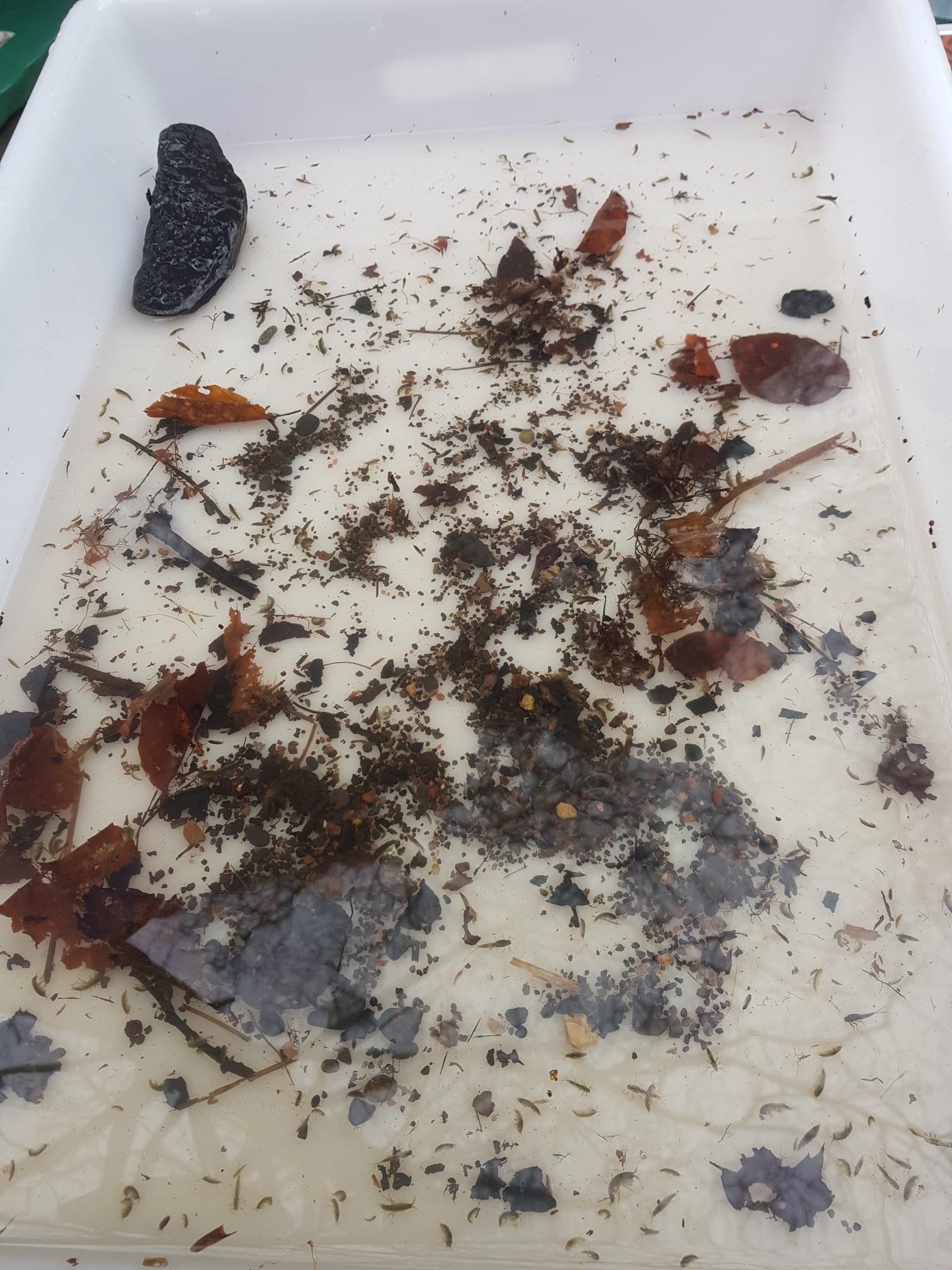
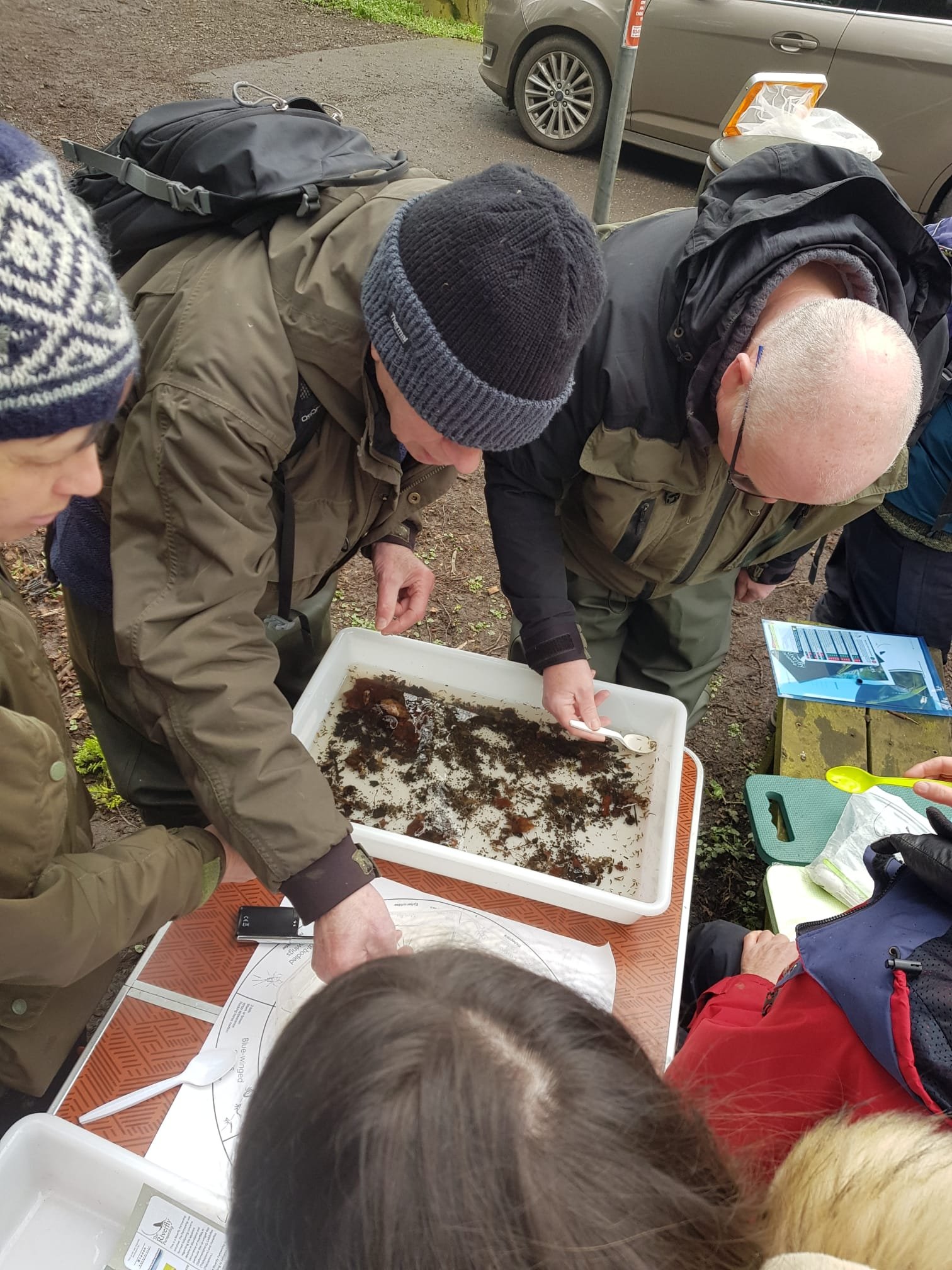
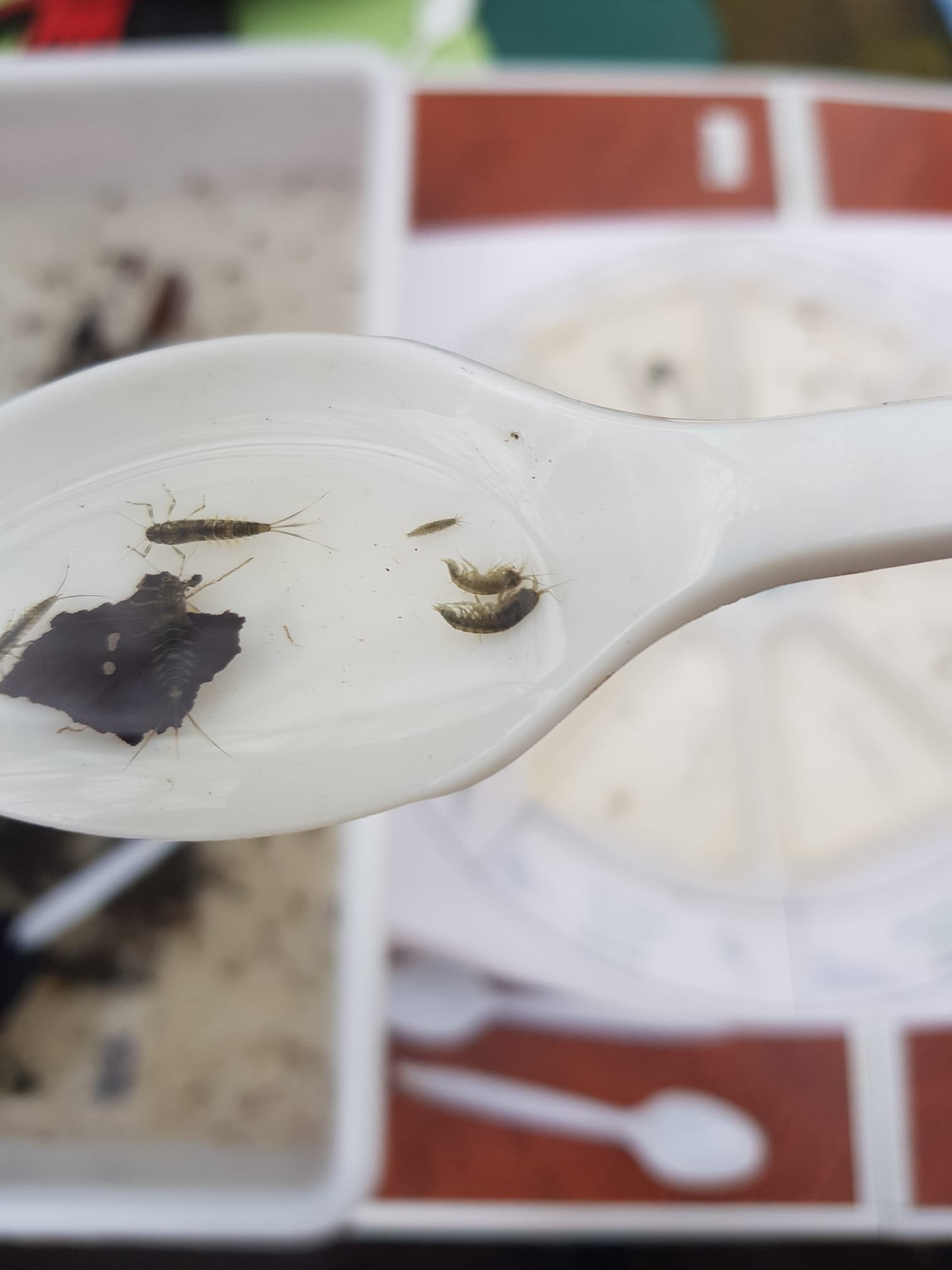


If you would like to be involved in this initiative, please contact the Secretary on eaasecretary2022@gmail.com or 07838820659.
Water Quality
Water Quality Monitoring
Thanks to the Crown Estates Environment Grant, we can purchase water quality monitoring equipment. Again, the aim is to gather data about our river that we can use to campaign for improvement. The purchase of the equipment is under way and we will be looking for volunteers from the membership to get involved in doing monthly measurements at key sites on the river. Again, if you would like to be involved, please contact the Secretary on eaasecretary2022@gmail.com or 07838820659.
Raw Sewage
Raw Sewage Spills into the Eden
We have all seen the reports nationally about the state of our rivers. However, it still came as a bit of a shock to see the published figures on ‘Combined Sewage Outfalls’ or CSOs into the River Eden. This made the local news last month when Councillor James Calder brought it up at a Fife Council meeting.
The full data is available to download for anyone on the Scottish Water website.
We contacted our local Scottish Water contact for comment. Here is a summary of their detailed response:
Question 1
Are you aware of, and can you share, specific timelines for improvements to the monitoring regime for the Eden or plans to reduce discharges from CSOs or SSSOs?
Answer 1
The majority of what is spilled from a sewer overflow is rain water, with less than 1% being sewage from toilets. They are an essential part of the waste water network as they reduce the risk of water backing up into homes, streets and businesses.
Our aim is to deliver water quality improvements to protect water quality and reduce Sewage Related Debris for 108 sites before 2027.
1000 monitors will be installed across the country over the next 18 months. They will include some locations on the Eden.
Question 2
Is it correct that only two sites (Cupar Haugh Park and Cupar Wastewater Treatment Works) are monitored?
Answer 2
Only two sites on the Eden are monitored as this is required in the license conditions of the sites.
At present in Scotland only a small number of overflows are monitored. Historically this has been because monitoring has been focused on the highest risk assets.
Question 3
Why is the River Eden not higher priority?
Answer 3
In terms of improvements, we are prioritising the CSOs which are unsatisfactory.
Discharges via CSOs can be unsatisfactory due to:
Operation causing water quality impacts
Operation during dry weather
Operation causing aesthetic (sewage related debris) impact
Failure to meet licence conditions
This page gives information on how we prioritise the installation of monitors on CSOs.
Question 4
To improve transparency in monitoring, should reported outflows not include information on weather conditions and river levels?
Answer 4
We share the desire for better integration with weather data and this is something which is being actively looked at over the coming years to improve transparency.
Our aim is to publish near real-time spill data for all monitored CSOs by December 2024.
At present, we do not map rainfall data against spill data but aim to achieve this in future.
Question 5
Are there any opportunities for Scottish Water to promote local initiatives to retain water within our catchment before it gets to into the sewage system, e.g. promoting household collection of rain water; encouraging natural flood management in the catchment; encouraging the development of more green space/ discouraging hard surfaces etc?
Answer 5
We absolutely share the ambition to reduce the amount of surface water entering the network and at working on this as a business.
However, we cannot do this alone. We are working with several local authorities at present on a number of studies and pilots to identify the most effective ways of stopping surface water from entering the network. There are a number of considerations within this when considering their efficacy, including ensuring that any installations such as rain gardens / water butts are maintained.
We have a policy of surface water removal on new developments.
Giant Hogweed
Giant Hogweed
Members trying to access the river for fishing downstream from Cupar will know that Giant Hogweed around the Scottish Water Sewage Works is a big problem. For years, members have worked hard to reduce the problem on access paths. Recently we have been working closely with Scottish Water to encourage them to take responsibility for this. As a result of the efforts of a number of people, particularly Councillor Margaret Kennedy, they have now agreed to tackle it. You should notice that this year the massive stand of Giant Hogweed at the Sludge Beds near the sleeper bridge has been sprayed by Scottish Water.
Giant Hogweed at the Scottish Water sludge beds
At the time of writing this blog it had its first spray treatment and will be due another shortly so should start to die back soon. They have said they will share pictures when this second spray has been completed. Members photos currently show that the spraying is incomplete, and photos have been forwarded to Scottish Water to make sure they are aware.
We have also contacted them to get exact information on any other land they have on the river in other locations so that we can make sure that they take responsibility for these too.
Giant Hogweed control across the whole catchment will be a big part of our Nature Restoration Fund work if we are successful. For the past 8 years contractors have been brought in by Fife Coast and Countryside Trust to deal with it upstream of Ladybank Bridge. The grant money would allow us to deal with the WHOLE catchment (which is really the only sensible way to solve the problem!). Fingers crossed!
If you are concerned about Giant Hogweed along the river, please let us know as we are trying to build up a map of where it is located so that we can contact the relevant landowner to support them to deal with it: eaasecretary2022@gmail.com




